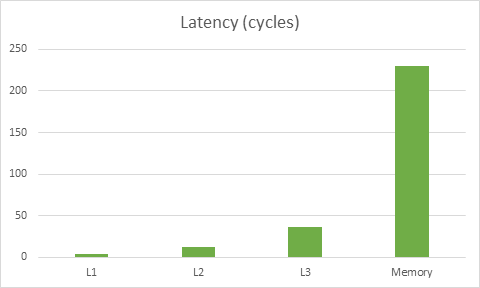Thanks for raising all these points @antonfirsov . I've commented below.
1. Already discussed, having consensus:
Parall.For()
- Benchmark, and define best practices based on benchmark results
- Apply the best practices (Remove Parallel.For-s, change granularity, etc.)
Agree on both. I want the library to gain as much as possible from being used in parallel. These benchmarks leave us wanting.
Common Vector4 pixel type
- Implement with bulk operations (Specially the To/From Vector4 conversions ;)
Looking forward to adding this. We need to decide on the range for the properties though. Ideally for maximum performance we wouldn't scale and only clamp when using ToBytes but I'm assuming most consumers would expect any vectorized properties to range from 0-1. Maybe we can default to not scaling but add PackFromVector4(Vector4 vector) and ToNormalizedVector4()?
Resize performance
- Use ToVector4() bulk conversion
- Apply data-oriented microoptimizations
- Reduce resampler window sizes (I suppose most of the values in horizontalValues are near to zero)
- This point was not part of my experiment, we can expect further speedup from this.
Agree on your first two points but not convinced by the latter. Close to zero won't cut it for many consumers, trust me, they'll spot any difference from other libraries. Resampling accuracy has to be absolutely spot on and I don't want to sacrifice it for a few milliseconds.
Your initial benchmarks without our faster Color struct were extremely promising anyway 2x faster as I recall? That's pretty fast!
Jpeg
- Remove unnecesary -> byte[] conversions in Jpeg encoder/decoder, pack pixels from floating point values
- Should perform better with the new Vector4 common pixel type
- Decoder: Optimize Huffmann decoding
- Encoder: Refactor Encode***
() logic into a JpegScanEncoder type (same pattern as in the decoder)
Agree (If we could speed up the decoder that would be absolutely brilliant. That's our biggest bottleneck at the mo). Had to reread the code for your last point re the Encoder but yeah. If anything just to clean it up a bit more. Speed is pretty good so far.
2. New, potentially controversial topics
Internal API
-
Review PixelArea
- It's mostly destroyed few lines after it's creation (in the same method, not passed further as a parameter)
- Feels like it doesn't worth to encapsulate the ComponentOrder, having a switch statement on it
- Most usages could be replaced with ArrayBuffer
+ BufferPointer + specific bulk call - ..... etc ... feels smelly. Or at least not ready to be public.
-
Utilize new Buffer API-s in codecs
- Most raw array usage + pooling boilerplate could be replaced with PinnedBuffer-s
-
I'm all for replacing the usage with Buffer API where we can. Two things should be doing the same job.
-
I'm assuming you mean the switch copying to/from in
PixelAccessor<T>. Yeah, I'd rather there was no switch though a switch per row isn't that bad. -
It definitely shouldn't be public.
Convolution processors
- Kernels matrices are really small, allocating them on the heap is shooting ourselves in the foot
- We can invent a new "quasi-dynamic" value type matrix struct instead
We could.... Don't know if it's all that worth it though. We only initialise these arrays once. Plus the Gaussian kernel can be any size.
OctreeQuantizer
- Benchmark octree PNG encoder vs. palette PNG encoder on a large image (I suppose Octree is really slow now)
- Review algorithmic complexity
- How does the tree look like when built from large images?
- Does insertion perform in O(1)?
- Data-oriented optimization: Allocate OctreeNode-s as structs in a continous memory area
Don't compare Octree vs Palette. The output quality difference between the two is massive. Octree gives the best output quality/perf combo; see this article for a summary of different approaches. I've already reduced memory consumption dramatically.
Also don't compare our encoding speed with System.Drawing as the output quality is also massive. Dunno what the approach in System.Drawing is but it's absolutely terrible, worse than our palette quantizer. I'd like to see our encoder get closer though. I'd like to see the decoder speed up however. At the mo it's over 2x slower. Same with Gif.
Complexity is unknown at the moment. I had to extend the original algorithm to allow for multiple alpha values to properly support indexed png's I would be interested in experimenting with any memory optimizations though.

Originally on https://gist.github.com/antonfirsov/5ae8f3db1c455baec388b84d52f22e5f
ImageSharp - performance issues, and topics for review
1. Already discussed, having consensus:
Parall.For()
Common Vector4 pixel type
Resize performance
horizontalValuesare near to zero)Jpeg
Encode***<T>()logic into aJpegScanEncodertype (same pattern as in the decoder)2. New, potentially controversial topics
Internal API
PixelArea<T>ComponentOrder, having a switch statement on itArrayBuffer<T>+BufferPointer<T>+ specific bulk callPinnedBuffer-sConvolution processors
OctreeQuantizer
O(1)?OctreeNode-s as structs in a continous memory area